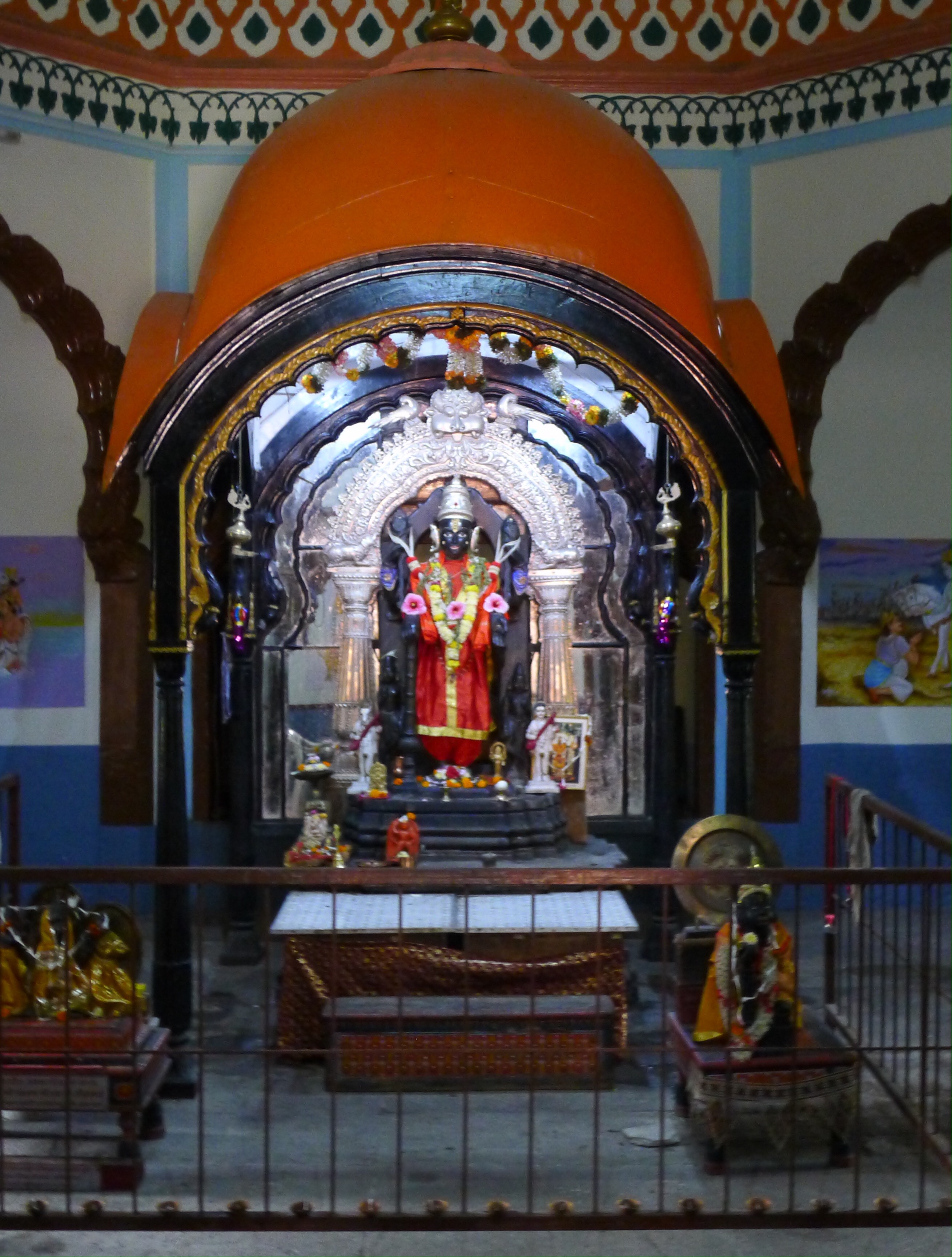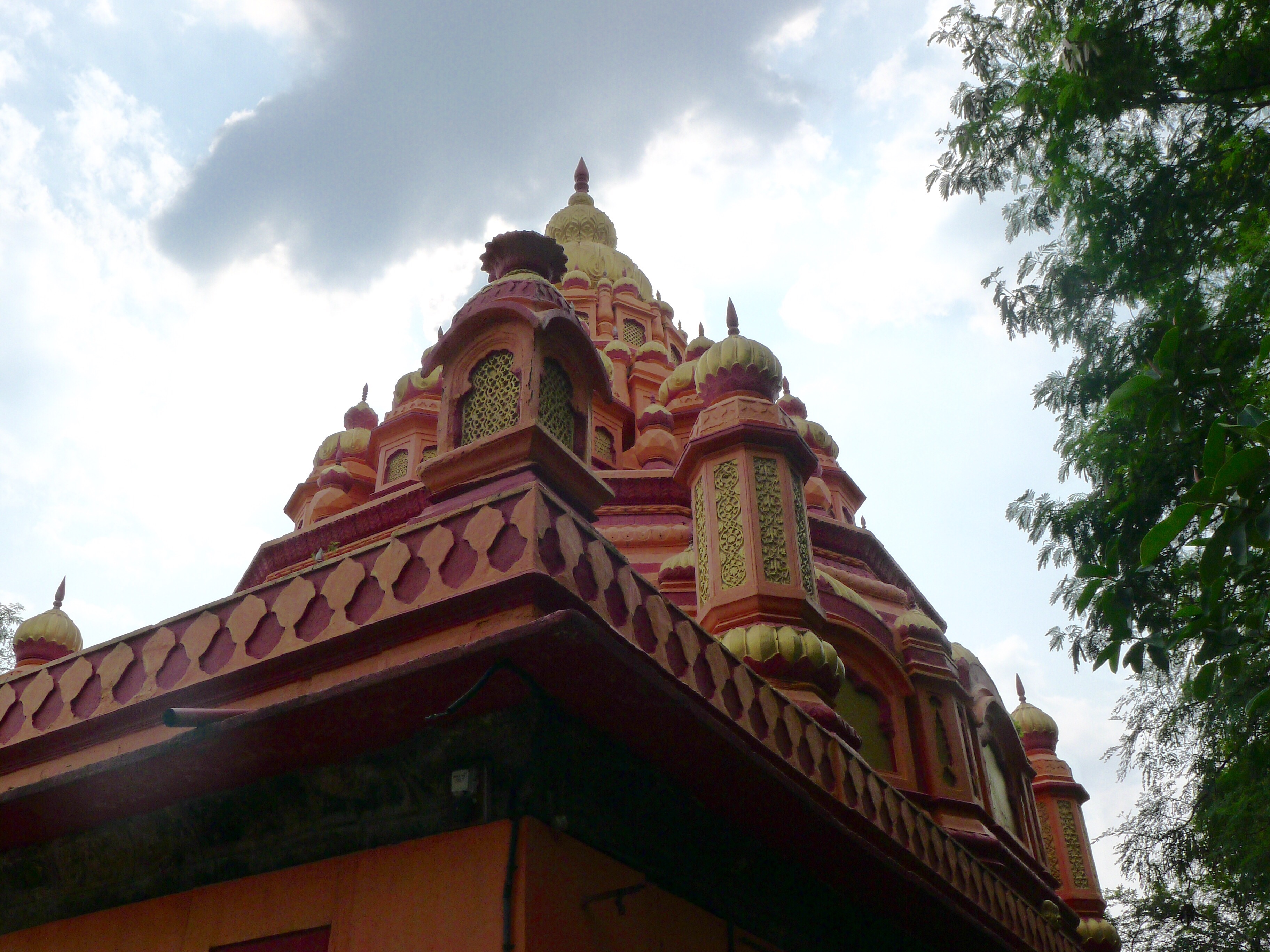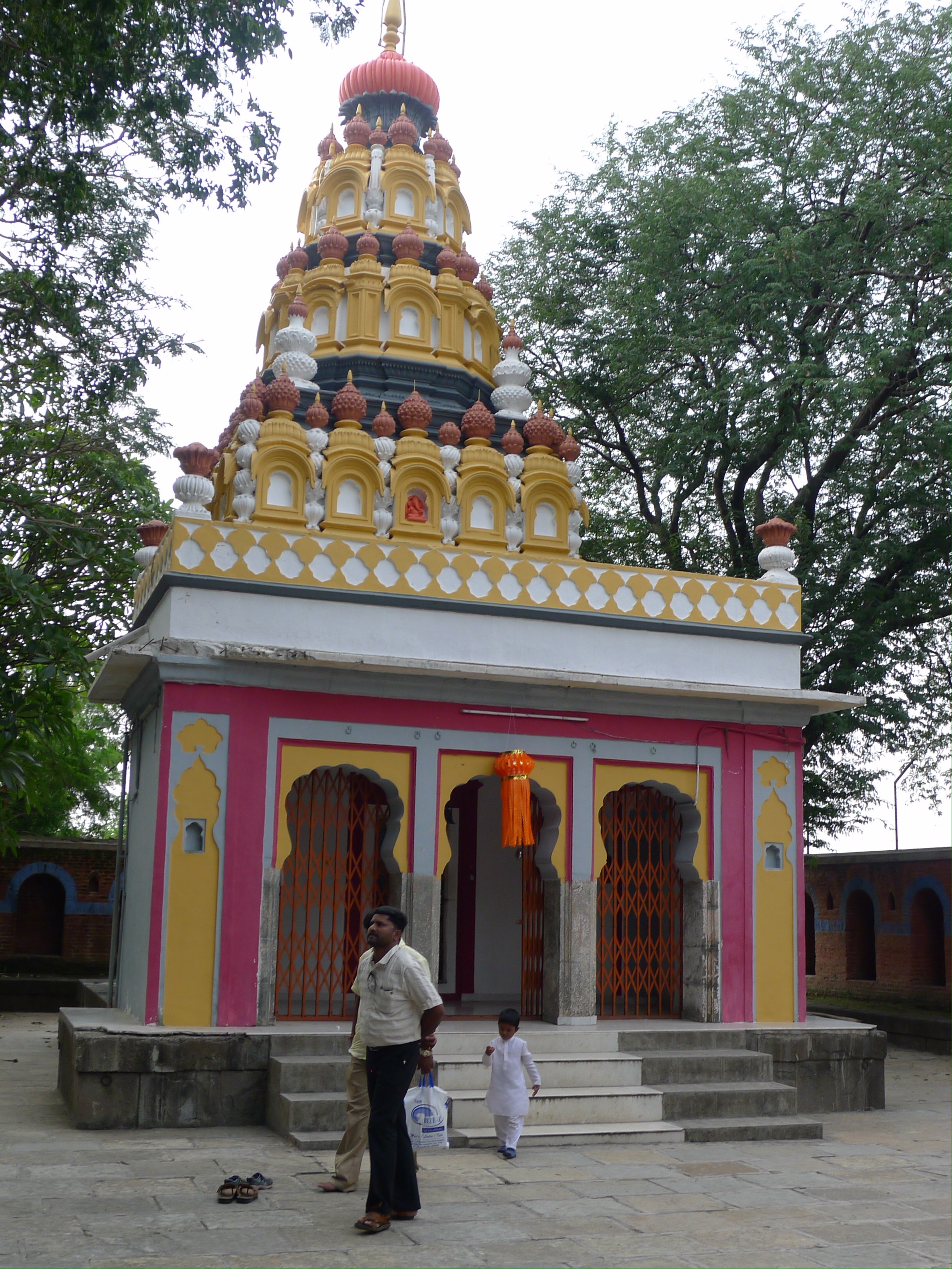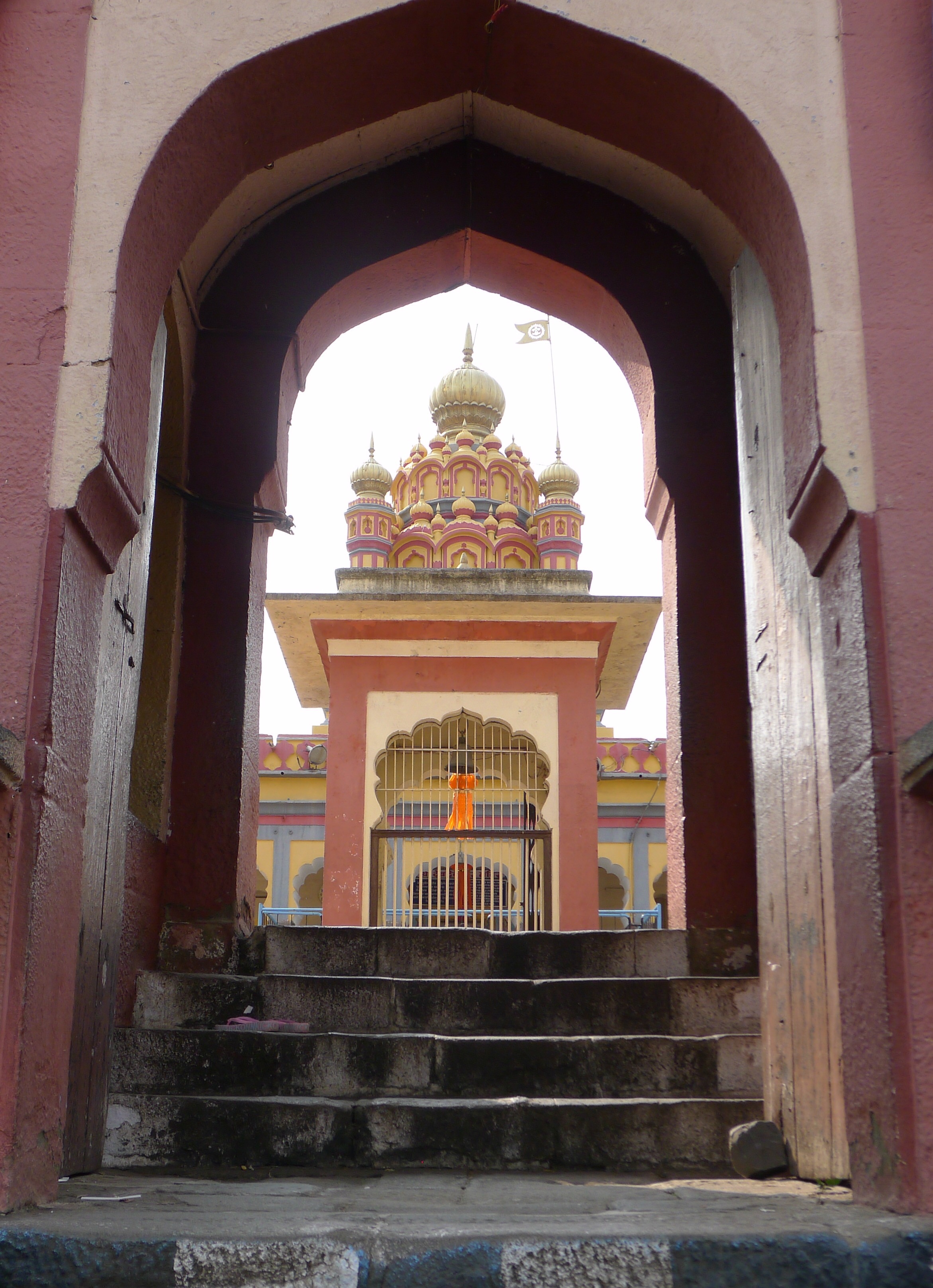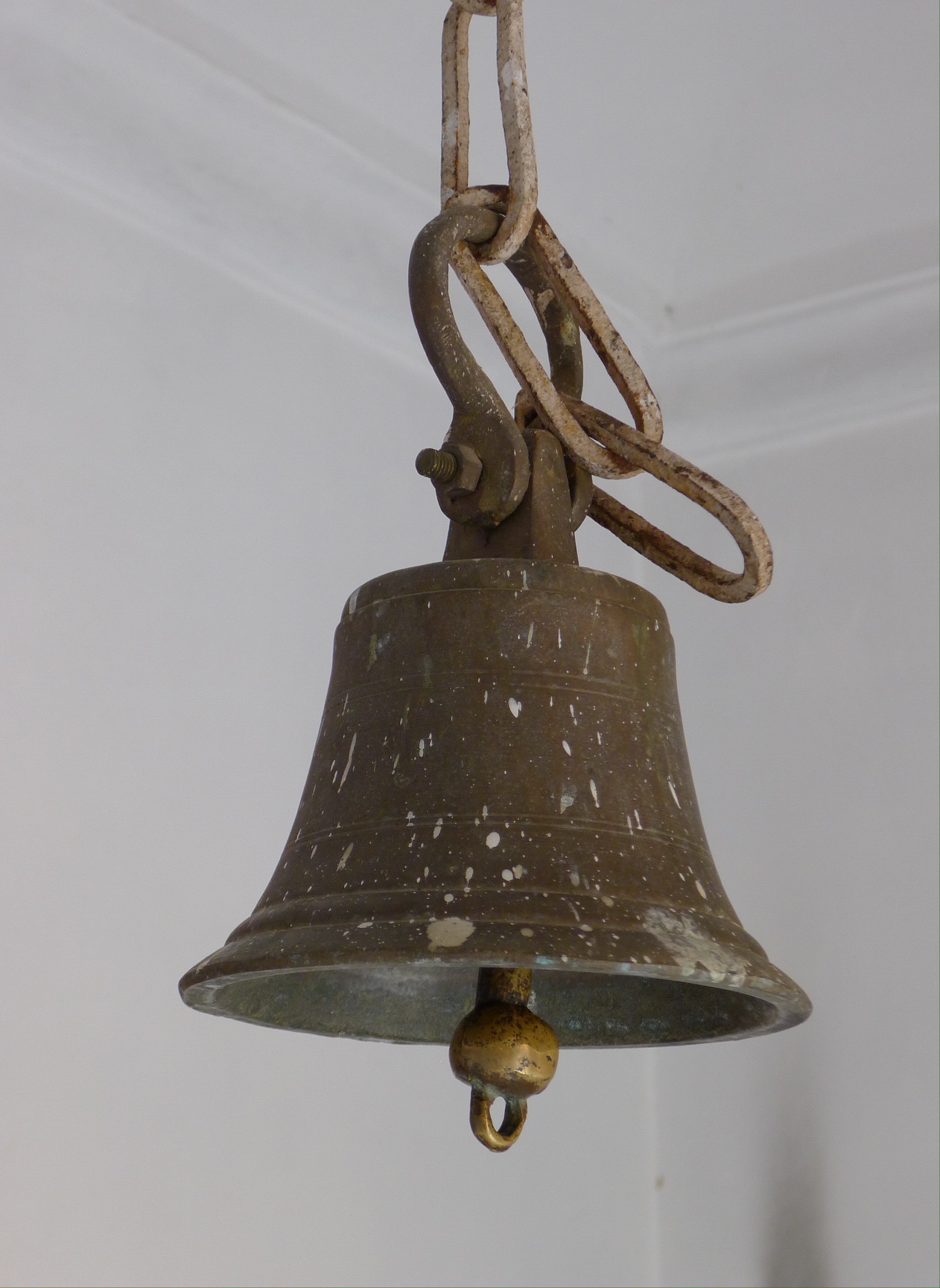Parvati Hill
“Hill stairs” was a new term for me. It means just what you might think: a hill (or slope) with an occasional stair. To get to the top of Parvati Hill there are 103 of these stairs each separated by a slope of about five or six paces. So, the entire time you are going up (or down as the case may be). It is 283 feet from the base to climb to 2,100 feet above sea level.
The long climb affords a view of Pune. This is the second highest spot in the city of 3.12 million people. Atop the hill is the oldest heritage site in Pune. Built during the Peshwar dynasty (I am guessing in the mid 1700’s) there are five temples, a museum, and a display of the leaders of the dynasty along with a map of the area under their rule.
When people come into a temple they ring the bell, go up to the railing or door and usually press their palms together in the classic namaste position. Of the very few I have witnessed they don’t stay very long. Each temple is usually devoted to a different god, Ganesh, Shiva, Parvati, etc, and there is usually an idol of that god in the temple.
We got there and back in an auto rickshaw driven by Amin, a friendly, affable guy with an easy smile and one of those deli like hats I see many men when he dropped us off I asked him about the hat and he said “It is a Gandhi hat”, as if that explained everything. After Parvati Hill he took us to a big grocery store that had three levels and to get from one level to the next there was a “travelator” another new (made up?) word. It is a combination of those moving walkways that are in airports and an escalator (minus stairs) so your grocery cart can go with you. The wheels the travelator must be magnetic because the cart sticks right to the sloped moving walkway.
And, without asking he gave us a ride down the back roads (no traffic) of an old part of Pune to Trishunda Maayureshwar Ganpati Temple (which I had to do a Google search to find post visit). It was very beautiful with carvings not unlike Ellora, albeit much smaller and built much later. Building started in 1754 and ended in 1770 it is just a part of the current fabric of the neighborhood, as all these temples often are all around town. It started to rain so we hopped in the rickshaw and took another wet ride back to Hare Krishna Mandir Rd, home base. The cold rain soaked my left shirt sleeve and pant leg. The reprieve from the heat felt so great.
